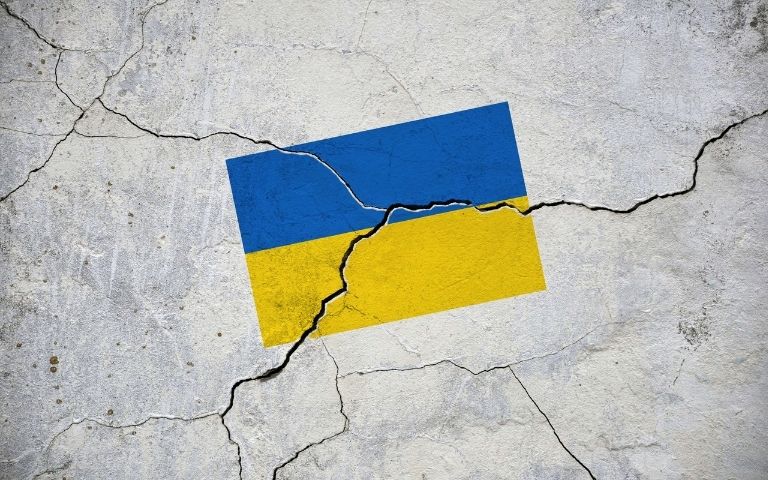Measured restraint on economic sanctions key to the global recovery.
[As events unfold, our hearts and prayers are lifted up for the people of Ukraine. Please read through our update on the economic outlook and portfolio positioning.]
In spite of the alarm brought about by geopolitical conflict, history shows stock market direction remaining consistent with economic direction.
The actions of the last week surrounding the Russian attack on Ukraine have been both shocking and disturbing. The heightened uncertainty can lead to greater market volatility and nerves regarding markets, especially when U.S. markets were already experiencing a technical correction.
As with any major event, our own investment team convened to evaluate the situation, consider our economic outlook, and assess portfolio positioning. We have spent a significant amount of time examining the complex issues. The following is a succinct summary of the prevailing themes at the moment:
1. Record of Steadying Markets over the Longer-Term
In spite of the alarm brought about by geopolitical conflict, history shows stock market direction remaining consistent with economic direction (see point #2). Even though it is common to see short-term volatility, markets steady out in the months that follow. 1
(As markets closed this week, consider that the S&P 500, NASDAQ Composite, S&P 400 Mid Cap, and Russell 2000 indices all finished higher than last Friday, February 18th. The price for West Texas Intermediate Crude finished lower than eight of the last ten trading days.)1
2. Strong Growth Outlook
The U.S. economy presently has strong growth momentum. While we expect overall GDP to be slower than 2021, the year is still expected to gain the second-fastest year of growth of the last twenty years.2 The events of the last week have not changed that expectation.
Moreover, the recent spike in inflation has not hampered momentum. Fourth-quarter GDP was the second-highest quarterly GDP of the last twenty years. In just the last six months of 2021, the economy added back more jobs than any single year since 1994.
3. The Absence of Severe Commodity Disruption
While there is potential for disruption, leaders from both Russia and the West have been cautious about interfering with trade. Their mutual interdependence means they each are jointly vested in avoiding harm to their own national economies.
At present, there has not been a severe disruption of global commodities. It is well known Russia is a large force within global commodities. Not only is Russia the largest exporter of natural gas in the world, but it is also the second-largest supplier of oil, a major supplier of global steel, and the world’s largest exporter of wheat.3 While there is potential for disruption, leaders from both Russia and the West have been cautious about interfering with trade. Their mutual interdependence means they each are jointly vested in avoiding harm to their own national economies.
In real terms, as of the time of this writing, Russian natural gas is still flowing through Ukraine and servicing Europe. Likewise, the U.S. continues to import 20-million barrels of oil per month from Russia.3 Should events change on the commodities front, our outlook would correspondingly change as well.
4. Potential for a Quick Resolution
While Russian tensions appeared to have escalated quickly, there is also potential for a quicker-than-expected resolution. Although Western sanctions have been restrained, a prolonged and bloody occupation of Ukraine would only lead to an extended and painful economic isolation for the Russian people. Already, Putin’s actions have incentivized Europeans and the US to reduce any long-term dependence on Russian gas and oil.
To avoid such an outcome, Putin must seek the quickest possible resolution. An agreement for Ukraine to remain under a formal “neutral” status with NATO serves as a win for Putin, as he would have halted the expansion of NATO into bordering nations. For Ukraine, a quick agreement towards NATO neutrality would retain its sovereignty, while also allowing it to further integrate into the European Union.
Admittedly, a quick ending could also result from an overwhelming defeat by the Russians. The chances of toppling the Ukrainian government and replacing it with a Russian puppet regime still remain a probability. If it materializes, global markets could still stay on course as the West appears too co-dependent on Russian gas and oil to take more forceful measures. Unfortunately, the ugly truth is that the greatest threat to U.S. portfolios is not a Russian victory, but a catastrophic removal of Russia from the global commodity markets.
Positioned for Growth
Unfortunately, the ugly truth is that the greatest threat to U.S. portfolios is not a Russian victory, but a catastrophic removal of Russia from the global commodity markets.
The year started with preparing investors for higher volatility and lower returns compared to 2021. At just seven weeks in, the year has fulfilled those expectations. Nonetheless, growth metrics continue to show strong inertia in the economy and the backdrop for market recovery remains intact.
As startling as unexpected global events can be, it is important that investors stay aligned with the larger forces driving economic direction. In this instance, it means weathering through the uncomfortable nature of the existing market correction.
Also, take assurance that our evaluation is daily and ongoing. The situation in Ukraine is fluid and not predetermined. Should events justify a deteriorating economic outlook, then our outlook on portfolio positioning will adjust with it.
Sources:
1. stockcharts.com
2. worldbank.org
3. eia.gov



